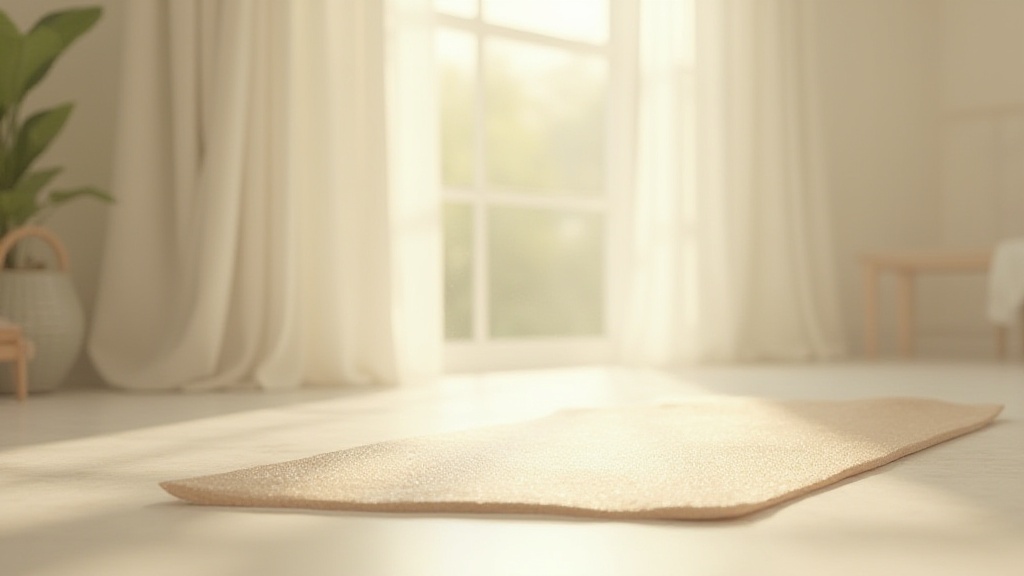
Flexibility plays a critical role in senior fitness, significantly influencing older adults’ ability to perform daily activities and maintain independence. Simple flexibility exercises are effective tools that can greatly improve overall wellness and functioning.
The high prevalence of falls among seniors underscores the necessity of incorporating safe stretches into their routines.
By enhancing flexibility, older adults can not only reduce the risk of injuries but also elevate their quality of life, which supports their path toward healthy aging.
Benefits Of Gentle Movement For Seniors
Incorporating gentle movement into daily routines stands out as a beneficial strategy for enhancing mobility and decreasing fall risk among seniors.
Activities categorized as gentle movement, such as walking and gentle yoga, promote functional fitness, enabling older adults to navigate daily tasks with greater ease. Research indicates that regular engagement in low-impact exercises aligns with lower fall rates, emphasizing the importance of safe stretching routines.
This type of movement also brings emotional benefits, significantly improving mood and encouraging social interaction.
Group classes or walking groups nurture connections that combat loneliness while promoting a sense of community. Examples of easy-to-incorporate movements that support physical wellbeing include:.
- Walking: A simple yet effective cardiovascular workout.
- Chair Yoga: Focuses on flexibility and balance without strain.
- Tai Chi: A gentle martial art that enhances balance and mental focus.
Integrating these gentle movements into daily routines can greatly enhance physical and emotional health for older adults, fostering overall wellness.

How To Safely Perform Neck Stretches
Performing neck stretches effectively supports improved posture and overall spine health. Engaging in regular neck stretches enhances flexibility, while also alleviating tension, particularly beneficial for seniors.
To ensure safety during these stretches, it is essential to assess your comfort levels before starting.
Incorporating appropriate warm-up exercises prepares your muscles and minimizes the risk of injury.
Gentle neck stretches, such as the Forward Neck Stretch and Neck Rotation Stretch, are effective for enhancing neck flexibility. These low-impact stretches not only relieve discomfort from daily activities but also contribute significantly to your overall wellness.
It is imperative to listen to your body, maintaining awareness to prevent strain while pursuing optimal results.
Incorporating Balance Training Into Stretching
Including balance training within your stretching routine enhances coordination and significantly reduces the risk of falls. This aspect of fitness can be integrated seamlessly, adding value to your overall exercise regimen.
Consider incorporating simple balance exercises alongside your stretches, such as:.
- Single-Leg Stand: This exercise helps improve leg strength and stability.
- Heel-to-Toe Walk: A straightforward movement that promotes balance.
These age-friendly exercises enhance your functional fitness while ensuring a focus on safety. Progression in your stretching and balance routine is essential; gradually increase the duration and difficulty of these exercises, continuously monitoring your limits. This mindful approach not only promotes healthy aging but also reinforces safety during physical activity. By effectively combining stretching with balance training, you establish a foundation for enhanced physical wellbeing and effective injury prevention.
| Stretch Type | Benefits |
|---|---|
| Forward Neck Stretch | Enhances neck flexibility and relieves discomfort |
| Neck Rotation Stretch | Improves range of motion and reduces tension |
| Single-Leg Stand | Improves leg strength and stability |
| Heel-to-Toe Walk | Promotes balance and coordination |
Effective Relaxation Techniques For Older Adults
Implementing effective relaxation techniques is essential for enhancing the quality of life among older adults. Stress reduction plays a significant role in improving both physical wellbeing and mental health, making these practices necessary.
Mindfulness practices, including meditation and mindful breathing, can seamlessly complement relaxation techniques.
For optimal effects, creating a calming environment is important; consider incorporating soft lighting, soothing sounds, and pleasant scents.
These elements promote a sense of comfort and facilitate relaxation.
Incorporating gentle yoga and progressive muscle relaxation techniques can enhance this experience, offering deeper muscle relaxation and tension relief.
Regular practice of these techniques leads to improved overall wellness and a more fulfilling life. Approaches such as neck stretches, shoulder rolls, and seated forward bends are ideal for integrating into daily routines, ensuring that older adults can engage in relaxation techniques comfortably and effectively.
Understanding The Importance Of Flexibility Maintenance
Flexibility significantly impacts daily activities overall health among older adults.
Maintaining good flexibility enhances mobility, aiding in tasks such as bending, reaching, and walking.
Regular flexibility exercises, including gentle yoga and low-impact stretches, contribute to injury prevention and improved posture.
These exercises also support independence, which is essential for healthy aging. Setting realistic goals for flexibility maintenance encourages consistent practice, making it easier to track progress.
Simple activities like seated exercises or neck stretches can be easily integrated into daily routines.
By focusing on these gentle movements, seniors can promote greater joint health and comfort over time. This ongoing effort fosters mobility enhancement and supports a lifestyle that prioritizes active aging and flexibility maintenance.
Relaxation and Flexibility for Older Adults
- Regular relaxation techniques can significantly lower stress levels, contributing to better overall mental health.
- Gentle yoga and stretching exercises can improve flexibility and mobility, which are crucial for daily activities.
- Maintaining flexibility through regular exercises helps prevent injuries and supports better posture.
- Creating a calming environment with soft lighting and soothing sounds enhances the effectiveness of relaxation practices.
Tips For Pain Relief Through Low-Impact Stretches
Low-impact stretches significantly contribute to effective pain management and increased mobility. Regularly incorporating flexibility exercises can specifically target common pain areas, such as the neck and shoulders, where gentle neck stretches and shoulder rolls provide relief.
To alleviate back pain, routines including seated spinal twists and cat-cow stretches are essential.
Leg stretches such as the seated hamstring stretch and standing quad stretch enhance overall flexibility.
Consistency is imperative; performing these stretches daily not only aids in muscle relaxation but also improves joint mobility, ultimately leading to long-term pain relief and enhanced comfort.
Exploring Seated Exercises For Comfort And Mobility
Seated exercises present an effective solution for individuals with limited mobility, enhancing accessibility and promoting comfort. Effective mobility exercises, such as seated leg lifts and gentle yoga poses, can significantly improve strength and flexibility.
Incorporating arm circles while seated can further bolster upper body strength. Group classes centered on these exercises offer substantial social benefits, fostering connections among seniors and promoting a supportive community environment.
Active participation in seated classes encourages consistency in practice, contributing to overall physical wellbeing and injury prevention.
This approach allows participants to maintain a comfortable and active lifestyle.
Examples of effective seated exercises include:
- Seated forward bend for spinal flexibility
- Ankle circles for joint health
- Chest openers for posture improvement
- Side stretches for tension relief
- Upper back stretches to enhance mobility
| Exercise Type | Benefits |
|---|---|
| Low-Impact Stretches | Targets pain areas, improves flexibility, and aids in muscle relaxation |
| Seated Exercises | Enhances accessibility, promotes comfort, and improves strength and flexibility |
| Group Classes | Fosters social connections and provides a supportive community environment |
| Consistency in Practice | Contributes to overall physical wellbeing and injury prevention |
Enhancing Joint Health With Therapeutic Stretches
Joint health significantly impacts overall mobility, making it essential for individuals to adopt proactive measures that prevent arthritis and other age-related conditions. Incorporating therapeutic stretches into daily routines provides a gentle approach to improving flexibility and fostering pain relief in the joints.
Regularly engaging in low-impact stretches can enhance mobility and support overall physical wellbeing.
Benefits of Joint-Friendly Stretching
Various stretches promote joint mobility and encourage flexibility maintenance, which is essential, particularly for seniors.
Key stretches include:.
- Neck stretches: These help improve neck flexibility.
- Shoulder rolls: This exercise reduces tension in the shoulders.
- Hamstring stretch: This enhances flexibility in the legs.
- Ankle circles: This promotes ankle joint health.
Establishing a Consistent Routine
Creating a consistent stretching routine encourages injury prevention and contributes to better balance training. Incorporating stretches such as the cat-cow stretch and quad stretch into a regimen allows individuals to target key areas that promote functional fitness and overall comfort. Employing supportive props during stretches, such as yoga blocks or straps, can enhance the effectiveness of gentle movement practices.
Mindful Practices for Joint Health
Integrating relaxation techniques and mindful breathing into the stretching routine further supports joint health and overall wellness. Exercises like the seated forward bend, chest opener, and upper back stretch foster spinal flexibility and tension relief. This holistic approach not only aids in muscle relaxation but also enhances core stability and posture improvement.
Overall, blending these age-friendly exercises into daily life promotes active aging and supports long-term mobility enhancement. Regular participation in these stretches cultivates body awareness and alignment, which contributes to better physical and emotional health.
| Stretch Type | Benefits |
|---|---|
| Neck Stretches | Improves neck flexibility |
| Shoulder Rolls | Reduces tension in the shoulders |
| Hamstring Stretch | Enhances flexibility in the legs |
| Ankle Circles | Promotes ankle joint health |
